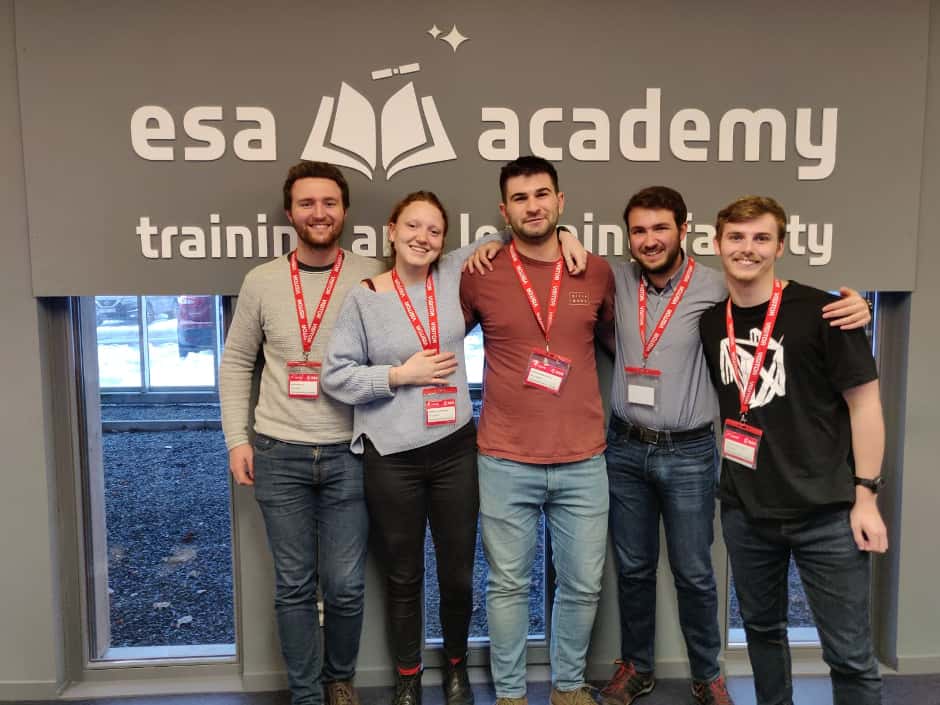
The three aeronautical and two mechanical engineering masters degree students spent four days at ESEC-Galaxia in Redu, Belgium, in preparation to test their technology in zero-gravity in Bordeaux, France in the Autumn.
During their time in Belgium, the University of Brighton students – whose project team name is PHP Cubed – have gained insights from industry experts and taken part in space-based activities including walking on the surface of the ‘moon’ via a virtual reality headset.
PHP Cubed (Liam Ardagh, Georgie Crewdson, Tom Critchley, Mateo Pontecorvo and Alex Evans) are one of two teams in Europe that will sample their technology in zero-gravity via parabolic flight operator NoveSpace’s A300 Zero-G aircraft as part of ESA's educational Fly Your Thesis! programme.
Liam said: “Time at the ESA training academy in Redu has provided us with invaluable information essential to the progression of our project.
“Interacting with experts from not only the European Space Agency but also from NoveSpace has been an amazing experience. Now we look forward to the flights.”
PHP Cubed’s project will test a novel passive heat management system, scaled down for a nanosatellite application.
If successful, this system allows sensitive components to be cooled and temperatures to be managed without the need for a power supply or moving parts – a crucial factor in keeping down weight and size in nanosatellites that can weight as little as one kilogram.
Georgie said: “This project has huge scientific potential, and the data we collect may change the way we design nanosatellites and contribute to the innovation of space tech design.
“Our experiment will also provide a legacy for future students to build upon and innovate even further.”




Nanogenerator consumes CO2 to generate electricity
Whoopee, they've solved how to keep a light on but not a lot else.